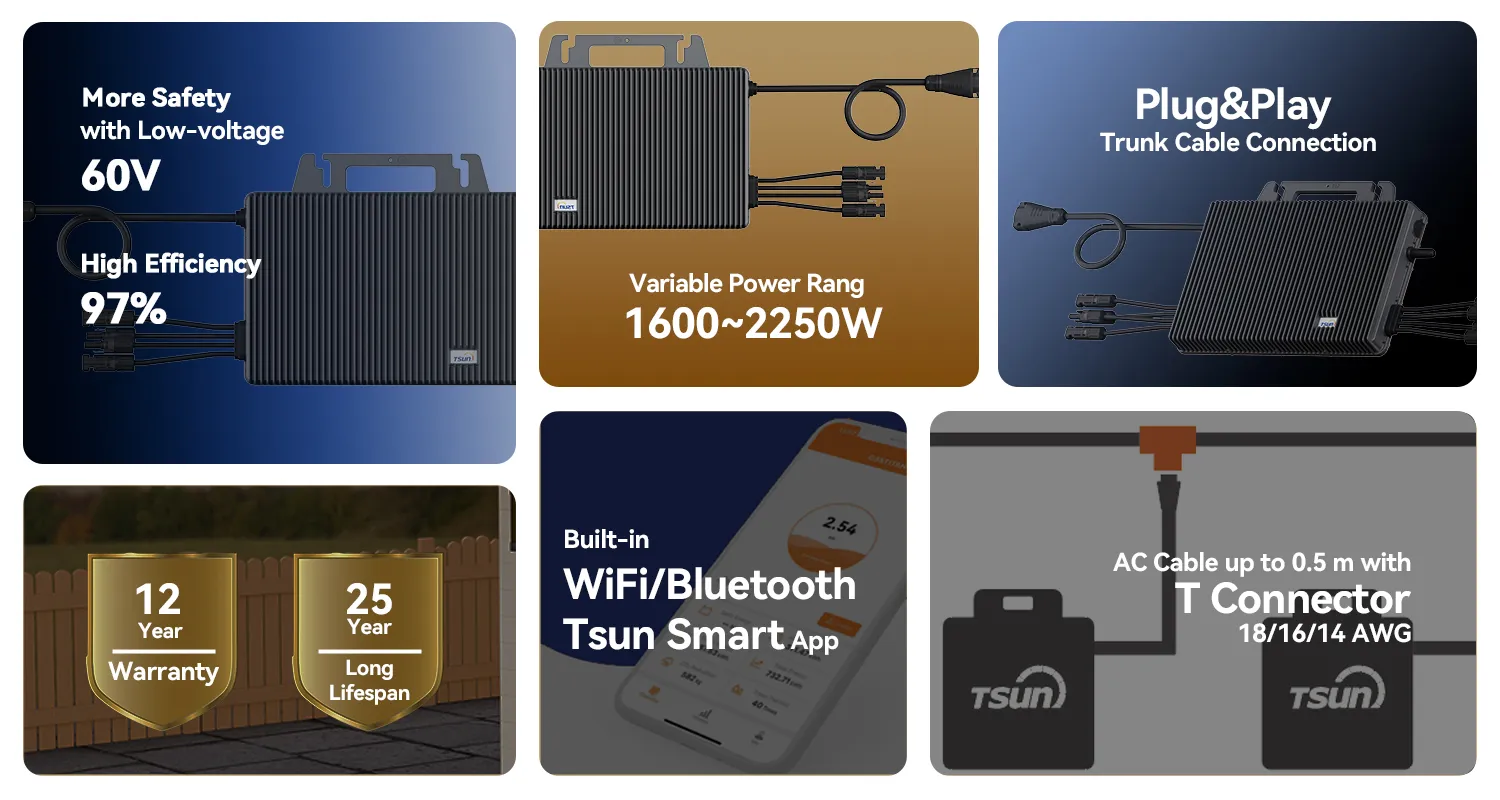Investing in solar panels with microinverters is not just a step towards sustainable living but a savvy financial decision. Unlike traditional solar panel systems, which rely on a single central inverter, systems with microinverters are gaining traction due to their unique advantages in optimizing energy conversion and enhancing system reliability.

Solar panels equipped with microinverters offer distinct advantages starting from enhanced energy efficiency. Each solar panel is paired with its own microinverter, allowing for individual optimization. This means that even if one panel is shaded or dirty, it will not affect the output of other panels. This is a significant improvement over string inverters, where the least efficient panel can dictate the output for the entire array. For residential and commercial properties with variable shading, microinverters are a transformative innovation.
Microinverters also contribute to greater system reliability. In traditional systems, if the central inverter fails, the entire solar array stops producing power. With microinverters, each one operates independently. As a result, if one microinverter fails, the rest of the system continues to function efficiently. This modular nature not only enhances overall system reliability but also simplifies troubleshooting and maintenance, as only the affected part needs attention rather than the entire system.

From an expertise standpoint, microinverters are also known for their superior energy management capabilities. They convert direct current (DC) from solar panels to alternating current (AC) directly at the panel level. This eliminates the need for high-voltage DC wiring throughout the building, which is common in systems using central inverters. Reducing high-voltage DC wiring minimizes fire risks and contributes to a safer overall installation.
Experiencing the versatility of microinverters is another reason why they have become the preferred choice for many. Their flexibility in system design is unmatched, allowing property owners to start with a smaller system and gradually expand without the need for replacing an existing inverter, as each panel operates independently. This is particularly advantageous for those wishing to expand their systems in the future as energy needs increase.
solar panels with microinverters for sale
Authoritative voices in the industry, such as the National Renewable Energy Laboratory (NREL), have pointed out the long-term cost benefits. Although microinverters may initially cost more upfront, their ability to maximize energy harvest and minimize downtime offers significant savings over the system's lifetime. Additionally, many manufacturers of microinverters provide extensive warranties, often lasting 20 to 25 years, which speaks to their durability and reliability. This backs up the financial investment with peace of mind, knowing the technology is built to last.
Trustworthiness is further reinforced by user testimonials and case studies illustrating the tangible benefits experienced by users who have made the switch. Homeowners consistently report higher energy outputs and lower electricity bills, confirming the claims that microinverters deliver more value in varied environmental conditions and installations.
The environmental impact of using microinverters cannot be overstated. As part of the broader green movement, choosing solar panels with microinverters contributes to reducing carbon footprints and dependency on fossil fuels. The efficiency and reliability factors play a crucial role in maximizing the clean energy generated, effectively ensuring that users are getting the most renewable energy possible from their systems.
In conclusion,
solar panels with microinverters represent a step forward in solar technology. Their advanced efficiency and safety features, coupled with expert endorsements and positive user experiences, make them a compelling choice for anyone looking to invest in solar energy. By choosing microinverters, consumers are not only opting for a system that pays off in performance and reliability but also contributing positively to the environment. Exploring options for solar panels with microinverters is undoubtedly a forward-thinking investment for both present and future energy needs.
 LEARN DETAILS
LEARN DETAILS



